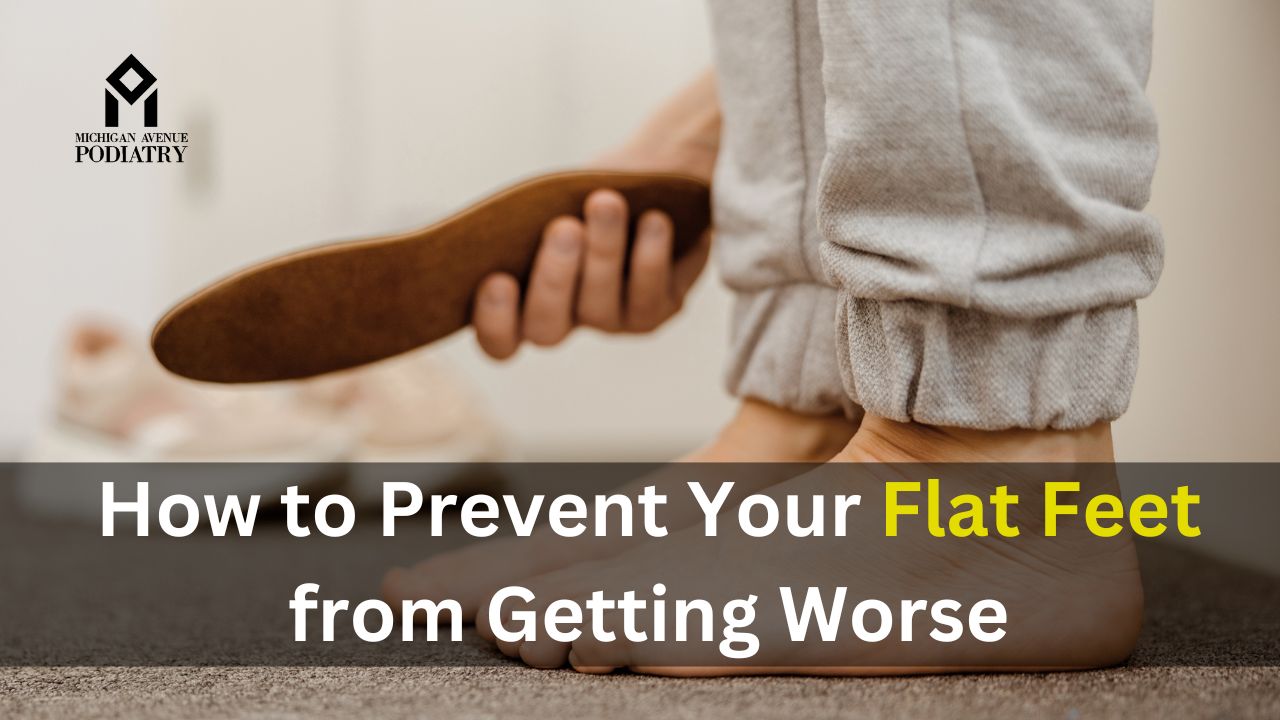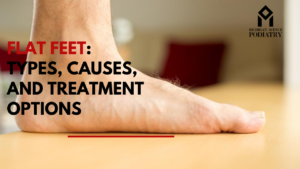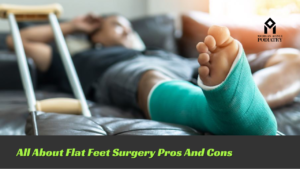Flat feet, also known as fallen arches or pes planus, occur when the arches of the feet collapse, causing the entire sole of the foot to come into contact with the ground. While flat feet are common and often asymptomatic, they can lead to foot pain, fatigue, and other musculoskeletal issues if left untreated. In this informative blog post, we’ll explore effective strategies for preventing flat feet from worsening, including lifestyle modifications, supportive footwear, exercises, and the role of podiatrists in managing this condition.
Understanding Flat Feet:
Flat feet can be classified as flexible or rigid, depending on the degree of arch collapse and flexibility of the foot structure. Flexible flat feet are typically painless and may only become symptomatic after prolonged weight-bearing activities. Rigid flat feet, on the other hand, are characterized by fixed deformity and may be associated with more severe symptoms, such as chronic pain and limited mobility.
Common causes of flat feet include:
- Genetics: Flat feet can run in families, with genetic factors contributing to the development of this condition.
- Injury or Trauma: Traumatic injuries to the foot or ankle, such as fractures or ligament tears, can alter foot structure and lead to flat feet.
- Muscle Weakness: Weakness or imbalance of the muscles and tendons that support the arch of the foot can contribute to flat feet.
- Aging: The natural aging process can lead to changes in foot structure and alignment, increasing the risk of developing flat feet.
Preventing Flat Feet from Getting Worse:
- Wear Supportive Footwear: Choose footwear with adequate arch support, cushioning, and stability to help maintain proper foot alignment and reduce strain on the arches. Look for shoes with firm midsoles and supportive insoles or orthotic inserts designed to provide additional support for flat feet.
- Avoid High-Impact Activities: Minimize participation in high-impact activities that place excessive stress on the feet, such as running, jumping, or prolonged standing on hard surfaces. Opt for low-impact exercises like swimming, cycling, or walking on soft surfaces to reduce strain on the feet and lower limbs.
- Maintain a Healthy Weight: Excess body weight can exacerbate flat feet and increase the risk of developing foot pain and other related conditions. Maintain a healthy weight through a balanced diet and regular exercise to alleviate pressure on the feet and promote overall foot health.
- Perform Foot-Strengthening Exercises: Incorporate exercises that target the muscles and tendons of the feet and lower legs to improve strength, stability, and flexibility. Focus on exercises such as toe curls, arch lifts, calf raises, and ankle circles to strengthen the muscles that support the arches and promote proper foot mechanics.
- Stretch Tight Muscles: Stretching exercises can help alleviate tension and tightness in the muscles and tendons of the feet and lower legs, improving flexibility and reducing strain on the arches. Perform stretching exercises for the calves, Achilles tendon, plantar fascia, and toe flexors to enhance foot mobility and prevent flat feet from worsening.
- Seek Professional Guidance: If you’re experiencing foot pain or discomfort related to flat feet, consult with a podiatrist for expert evaluation and treatment recommendations. Podiatrists specialize in diagnosing and managing foot conditions, including flat feet, and can provide personalized treatment plans tailored to your specific needs and goals.
Conclusion:
Preventing flat feet from worsening requires proactive measures to support foot health, alleviate symptoms, and maintain proper foot alignment and function. By wearing supportive footwear, avoiding high-impact activities, maintaining a healthy weight, performing foot-strengthening exercises, stretching tight muscles, and seeking guidance from a podiatrist, you can take steps to mitigate the progression of flat feet and improve overall foot health. Remember, early intervention and proactive management are key to preventing flat feet from causing pain and disability in the long term. If you’re concerned about your flat feet or experiencing foot pain, don’t hesitate to reach out to a podiatrist for expert evaluation and personalized care. With the right strategies and professional guidance, you can take control of your foot health and enjoy a more active, pain-free lifestyle.



